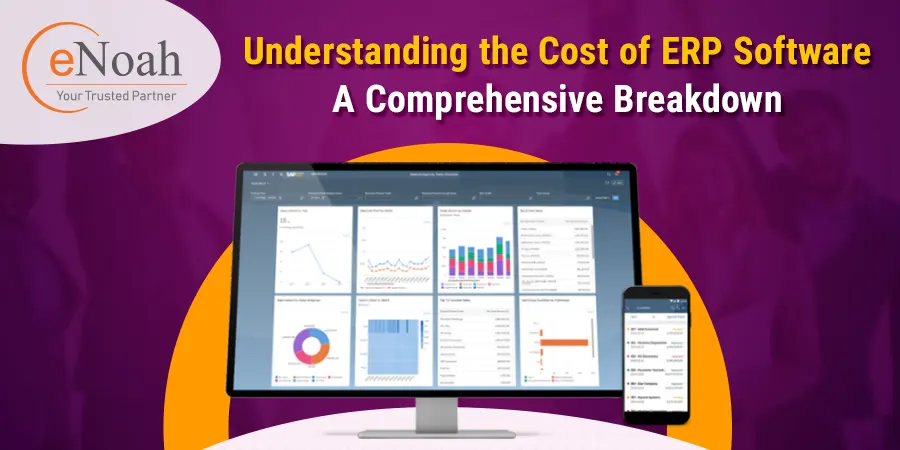
Enterprise Resource Planning (ERP) software stands as a cornerstone for businesses seeking streamlined operations, enhanced efficiency, and improved decision-making. However, understanding the cost components associated with ERP software is crucial before making this significant investment. In this article, we’ll delve into the intricacies of ERP software costs, breaking down each aspect to provide a comprehensive understanding.
The initial acquisition costs of an ERP system encompass the expenses incurred during the procurement phase. This includes software licenses, hardware (if applicable), implementation fees, customization charges, and consulting services. These costs vary significantly based on the vendor, the chosen modules, the scale of implementation, and any unique customization requirements. Understanding these upfront costs is vital to budgeting and initial financial planning.
Implementing an ERP system involves more than just installing software. It requires comprehensive planning, data migration, configuration, training, and customization to align the system with the unique needs of the business. Implementation costs cover project management, software configuration, integration with existing systems, and employee training. Customization expenses arise if the organization requires tailored modifications to suit specific workflows or functionalities.
Beyond the initial implementation, businesses must account for ongoing maintenance and support costs. This includes software updates, patches, bug fixes, technical support, and access to vendor services. Maintenance fees are typically charged annually or as a subscription, ensuring that the ERP system remains updated, secure, and functional. Robust support services are crucial to address any issues promptly, ensuring uninterrupted operations.
ERP systems often involve licensing fees based on the number of users or modules utilized. Understanding the licensing model (user-based, module-based, or concurrent users) and associated costs is imperative. As businesses grow or require additional functionalities, these fees might fluctuate. It’s crucial to forecast potential future needs and assess how they might impact licensing costs to avoid unexpected financial burdens.
Training expenses are often overlooked but are integral to successful ERP implementation. Ensuring that employees are proficient in utilizing the ERP system is critical for maximizing its benefits. Training costs include creating training materials, conducting sessions, and providing ongoing support to users. Additionally, change management costs arise from managing organizational transitions, addressing resistance to change, and ensuring a smooth adoption process.
Integrating an ERP system with existing software and migrating data from legacy systems can incur substantial costs. Assessing the complexity of data migration, ensuring data accuracy, and resolving compatibility issues are essential considerations. Integration expenses cover middleware, connectors, data mapping, and the expertise required for seamless data transfer between systems.
ERP implementations often entail unforeseen or hidden costs that may arise during the process. Contingency planning to accommodate unexpected expenses is crucial. These hidden costs might include additional customization needs, unforeseen technical challenges, or extended implementation timelines, emphasizing the importance of having a buffer in the budget.
Understanding the multifaceted nature of ERP software costs is pivotal for organizations embarking on this transformative journey. By dissecting and comprehending each cost component-initial acquisition, implementation, ongoing maintenance, licensing, training, integration, and hidden costs-businesses can craft a realistic budget and make informed decisions. Prioritizing thorough cost analysis, considering long-term implications, and aligning expenses with anticipated benefits are key to successful ERP adoption and maximizing its value within the organization.